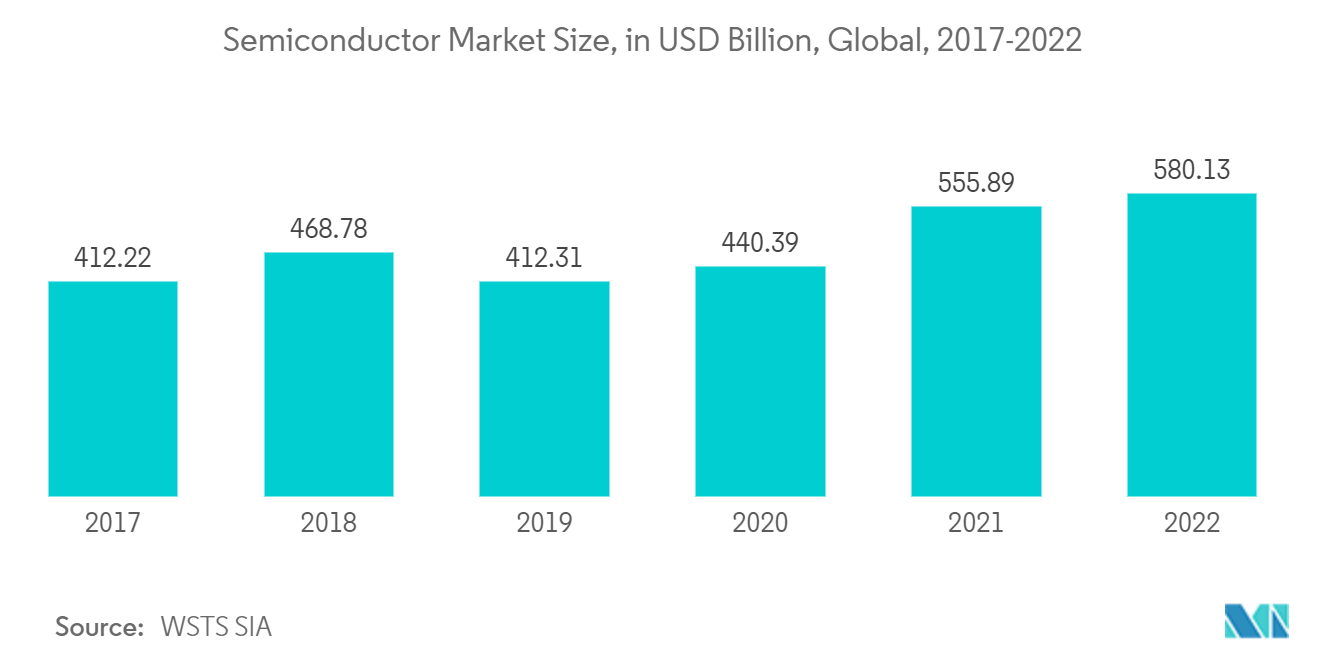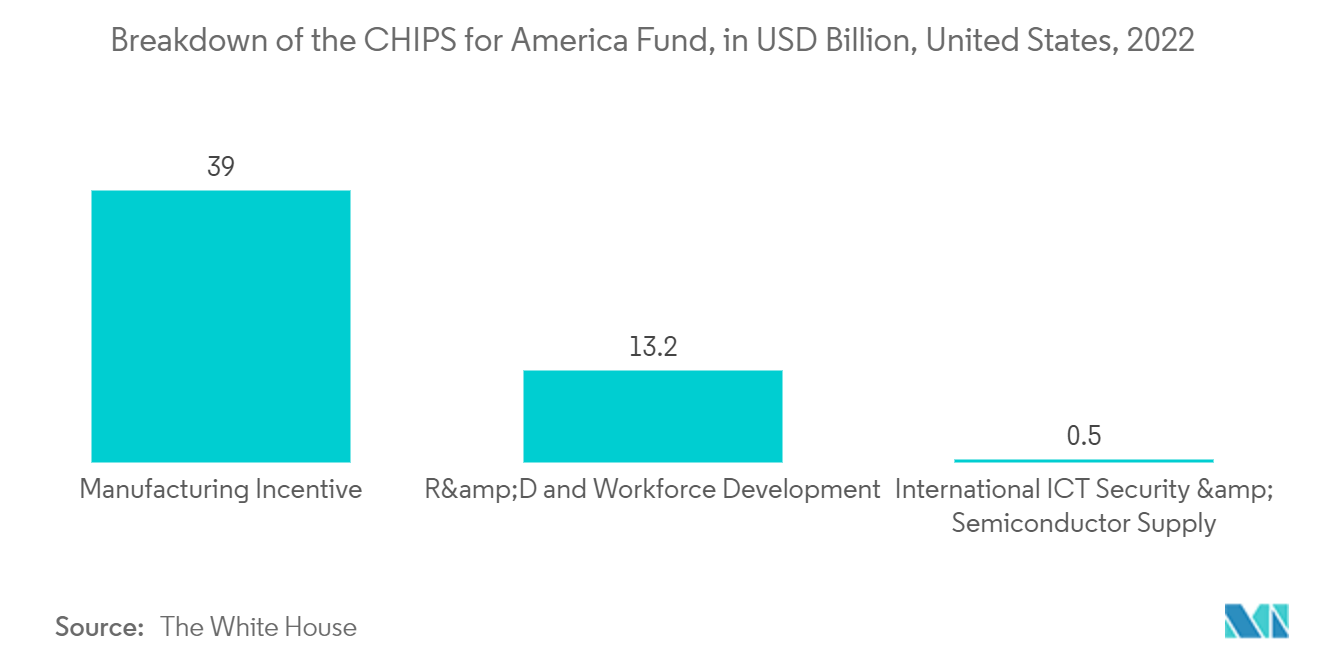Market Trends of Flow Control Industry In The Semiconductor Industry
Mechanical Seals to Register the Fastest Growth
- A mechanical seal's primary function is to prevent fluid or gas leakage through the clearance between the shaft and the container. Mechanical seals are made up of two faces separated by carbon rings. The revolving equipment comes in touch with the initial face, which is stationary. Furthermore, the seal ring (first face) is the main component of the seal on which the mechanical force generated by springs, bellows, or fluids in the equipment acts. In the semiconductor industry, seals are invariably housed in areas of the processing system where they need to withstand highly corrosive gases, liquids, gases, and plasmas, often in vacuum conditions or at elevated temperatures.
- The mechanical seal market has seen substantial growth in recent years. It is expected to continue to grow in the coming years, primarily due to growing investment in semiconductor manufacturing facilities. In emerging nations, the rise of AI, ML, and IoT, as well as smartphone and consumer electronics development, is predicted to prompt further development policies and investments in the semiconductor industry. Cartridge seals, balanced and unbalanced seals, pusher and non-pusher seals, and conventional seals are examples of mechanical seals impacting the mechanical sealing market expansion.
- In the fabrication of semiconductor products, seal reliability and contamination reduction are crucial. Chemical filtration, chemical transfer, AODD pump sealing, and silicon wafer fabrication are essential semiconductor applications where mechanical seals have proven to be the best option.
- Deposition, etch, ash/strip, plasma, and heat processing or annealing are synergistic process technologies that constitute some of the most difficult environments for elastomer seal materials. These are frequently encountered during the fabrication of semiconductor-integrated circuits. Clean-room manufactured seals with low particle and trace metal contamination are used to minimize yield loss and chemical erosion rates. These seals can provide benefits such as increased system up-time, increased mean time between failure (MTBF), decreased wet clean or mechanical clean frequency, and reduced cost of ownership (CoO) through lower consumable costs (CoC).
- In recent years, the digitization and automation trends have significantly enhanced the demand for semiconductors. For instance, according to SIA and WSTS, sales of semiconductors reached a valuation of USD 580.13 billion globally in 2022, reporting a year-on-year growth of 4.4%. Although it is anticipated to stabilize in the coming years, gradual growth is anticipated during the forecast period, which is anticipated to drive the growth of the studied market during the forecast period.

United States is expected to Hold Significant Market Share
- In recent years, the United States has started taking several initiatives to boost the growth of the semiconductor industry. For instance, in 2022, the Biden administration signed the CHIPS and Science Act. This USD 52.7 billion industrial program intends to support research, improve supply chain resilience, and revive semiconductor manufacturing in the United States.
- The U.S. has experienced increased domestic chip manufacturing facility proposals since the U.S. CHIPS and Science Act was first proposed and up to its adoption in 2022. The development of new plants and research and design projects have received investments totaling more than USD 200 billion. To entice original chip manufacturers (OCMs) to their borders, U.S. states have implemented legislation requiring them to provide additional financing.
- Incentives and forgiven loans for OCMs totaling USD 200 million are being considered by Oregon. New York promised state incentives of USD 5.5 billion, while Michigan authorized over USD 800 million in incentives. Since the CHIPS and Science Act was enacted, OCMs have increased initial investments by a factor of two to three. From USD 12 billion to USD 40 billion, TSMC expanded its investment in Arizona-based factories.
- Due to the CHIPS and Science Act, the United States is well on its path to boosting its proportion of semiconductor production worldwide as the USD 52.7 billion aims for the overall development of the semiconductor industry, which include USD 39 billion as manufacturing incentives, USD 13.2 billion for R&D and workforce development, and USD 500 million for semiconductor supply chain activities and international information communications technology (ICT) security.

